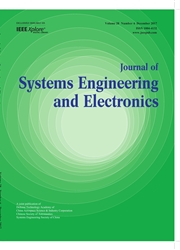

 中文摘要:
中文摘要:
For the product degradation process with random effect (RE), measurement error (ME) and nonlinearity in step-stress accelerated degradation test (SSADT), the nonlinear Wiener based degradation model with RE and ME is built. An analytical approximation to the probability density function (PDF) of the product's lifetime is derived in a closed form. The process and data of SSADT are analyzed to obtain the relation model of the observed data under each accelerated stress. The likelihood function for the population-based observed data is constructed. The populationbased model parameters and its random coefficient prior values are estimated. According to the newly observed data of the target product in SSADT, an analytical approximation to the PDF of its residual lifetime (RL) is derived in accordance with its individual degradation characteristics. The parameter updating method based on Bayesian inference is applied to obtain the posterior value of random coefficient of the RL model. A numerical example by simulation is analyzed to verify the accuracy and advantage of the proposed model.
 英文摘要:
英文摘要:
For the product degradation process with random effect (RE), measurement error (ME) and nonlinearity in step-stress accelerated degradation test (SSADT), the nonlinear Wiener based degradation model with RE and ME is built. An analytical approximation to the probability density function (PDF) of the product's lifetime is derived in a closed form. The process and data of SSADT are analyzed to obtain the relation model of the observed data under each accelerated stress. The likelihood function for the population-based observed data is constructed. The population-based model parameters and its random coefficient prior values are estimated. According to the newly observed data of the target product in SSADT, an analytical approximation to the PDF of its residual lifetime (RL) is derived in accordance with its individual degradation characteristics. The parameter updating method based on Bayesian inference is applied to obtain the posterior value of random coefficient of the RL model. A numerical example by simulation is analyzed to verify the accuracy and advantage of the proposed model.
 同期刊论文项目
同期刊论文项目
 同项目期刊论文
同项目期刊论文
 期刊信息
期刊信息
